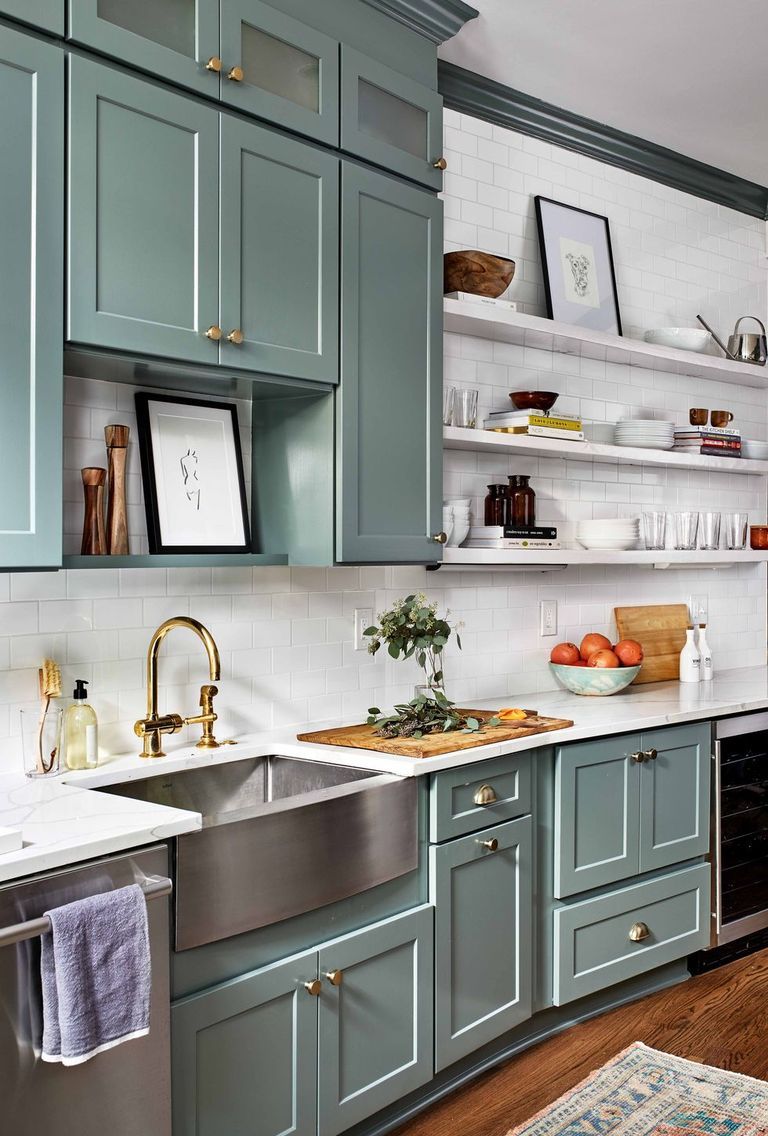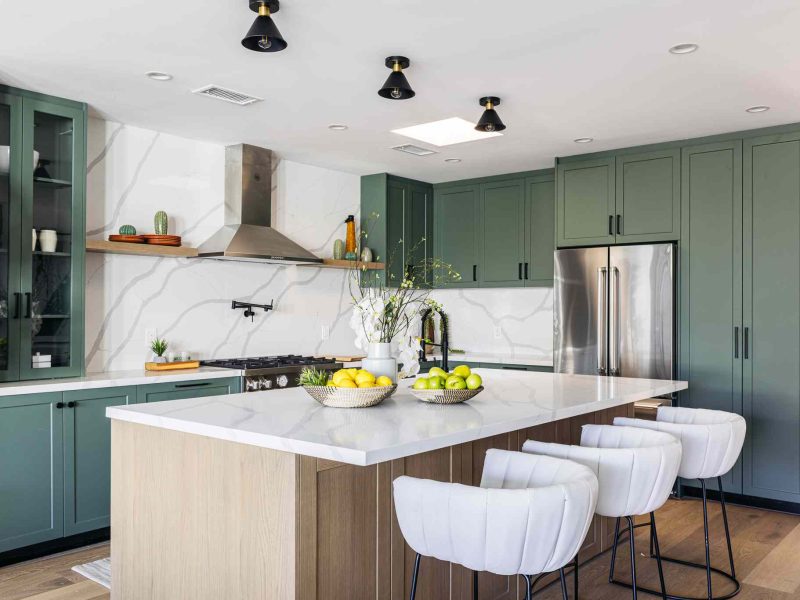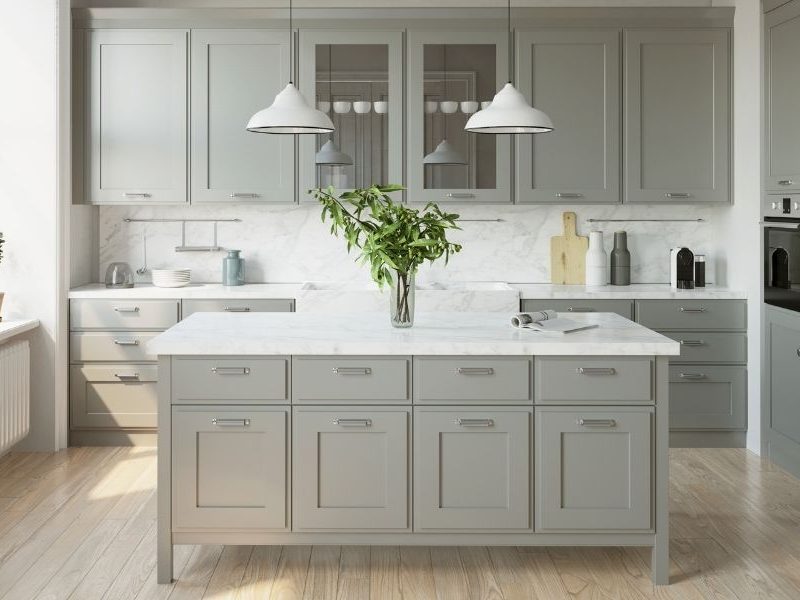Painting your kitchen cabinets can be a great way to give your kitchen a whole new look, and it doesn’t have to be too difficult if you know how to do it like a pro. With the right tools, materials, and techniques, you can get a professional-looking finish that will last for years to come. In this guide, you’ll learn about the best products and techniques for painting kitchen cabinets so you can get the job done right. You’ll also find tips on how to prepare the surface, choose colors, and apply the paint for a beautiful and durable finish. So, get ready to transform your kitchen cabinets and make them look like they were done by a professional.
Preparation
Is key when it comes to painting kitchen cabinets like a pro.
Painting kitchen cabinets can be an intimidating task, but with the right tools and techniques, it doesn’t have to be. Before you start painting, it is essential to properly prepare the cabinets. This means thoroughly cleaning them and sanding them down. For an extra professional finish, you can use a primer before the actual paint. Once the cabinets are prepped, you can begin painting. To ensure a smooth finish, use an angled brush and apply the paint in thin, even strokes. Allow the paint to dry completely before applying the second coat. Finally, finish off with a clear coat of polyurethane for protection and shine. Following these steps will result in a professional-looking paint job for your kitchen cabinets.
Choosing Paint
for Kitchen Cabinets
Painting kitchen cabinets is a great way to update and refresh your kitchen. But the process requires more than just a brush and roller. The type of paint you choose for your cabinets can make a huge difference in the look and longevity of your project. It’s important to choose a paint that will stand up to the wear and tear of everyday kitchen use.
When selecting paint for kitchen cabinets, you’ll want to consider the surface you’re painting as well as the finish you’d like to achieve. If you’re painting over existing cabinetry, you’ll want to check the material before you start. Some surfaces can be painted directly, while others may require a primer or a special type of paint.
To achieve a professional finish, it’s best to use a high-quality, oil-based paint. Oil-based paints provide an even finish, and they’re highly resistant to moisture, heat, and stains. They may be more expensive, but they also tend to last longer than other types of paints. If you’re looking for a more affordable option, latex paint may be a better choice.
When choosing a color, consider the type of atmosphere you want to create. Neutrals are always a safe choice, but bold colors can also be used for an eye-catching look. If you’re worried about making the wrong decision, you can always test out a few shades on a piece of cardboard before committing to the project.
By taking the time to choose the right paint for your kitchen cabinets, you can ensure that your project looks great and stands up to everyday use. Selecting the right paint can make all the difference in transforming your kitchen into the home of your dreams.
Applying Primer
Painting kitchen cabinets can be an intimidating task for any DIYer. However, with the right tools and techniques, you can get professional-looking results. One of the most important steps in painting kitchen cabinets is applying primer. Primer provides a smooth surface and helps ensure a lasting finish. With a few steps and the right supplies, you can ensure that you’re applying primer like a pro.
First, make sure to clean your kitchen cabinets well before applying primer. Remove all dirt and grease from your cabinets with a degreasing cleaner. Once the cabinets are clean, you can apply the primer. If you’re using a spray primer, make sure to shake the can well before spraying. When using a brush or roller to apply primer, use light, even strokes. If you’re applying a latex primer, you may need to use two coats to get a smooth finish. Once the primer is dry, your kitchen cabinets are ready for a fresh coat of paint.
By following these steps, you can ensure that you’re applying primer like a pro. Primer is an essential step in painting kitchen cabinets, and with the right tools and techniques, you can get professional-looking results.
Painting the Cabinets
Painting kitchen cabinets can be a daunting task if you’re not familiar with the process. If you want to paint your cabinets like a pro, you need to be well prepared and follow the right steps. First, you’ll need to prepare the surface of the cabinets by sanding them down and cleaning them thoroughly. Once the surface is ready, you should apply a coat of primer, followed by a coat of paint. It’s important to give the primer and paint enough time to dry completely before adding a second coat. To get the best results, use a high-quality paintbrush or roller to evenly apply the paint to the cabinets. After the paint is dry, you can add a topcoat of polyurethane for extra protection and shine. Finally, you can reinstall the hardware and you’re done! With the help of the right tools and supplies, you can paint kitchen cabinets like a pro.

Adding Finishing Touches
Adding the finishing touches to your kitchen cabinets can often be the most difficult part of the job. You want your cabinets to look professional, but you don’t want to overdo it. To achieve a polished, professional look, consider adding the following:
- Trim: Trim can help give your cabinets a finished look and can be added with a few simple tools. You can choose from a variety of trim styles, from a simple quarter round to more intricate designs.
- Hardware: Choosing the right hardware for your kitchen cabinets can make a big difference in the overall look. Consider investing in quality hardware, such as brushed nickel or chrome, to give your cabinets a sleek, modern feel.
- Glass Panels: Adding glass panels to your kitchen cabinets can give them a contemporary look. Choose from a variety of styles, such as frosted glass or leaded glass, to create a unique look.
- Paint: The right paint can make all the difference in the look of your kitchen cabinets. Choose a paint that is easy to clean and can withstand the wear and tear of a busy kitchen.
By following these tips, you can give your kitchen cabinets a professional, polished look. With a bit of time and effort, you can paint your kitchen cabinets like a pro and create a beautiful, timeless look that will last for years to come.
Protecting Your Work
Whether you’re a professional painter or a DIY enthusiast, it’s important to protect your work from the elements and everyday wear and tear. Painting kitchen cabinets requires the right preparation, painting techniques, and finishing touches to ensure your paint job looks great and lasts for years to come. To protect your work, start by thoroughly cleaning the cabinets before prepping them for painting. Fill any holes with putty and sand them down to a smooth finish. Once you’ve painted the cabinets, apply a protective finish like polyurethane, lacquer, or varnish to protect the paint job and make it more durable. Additionally, it’s a good idea to use a drop cloth when painting to prevent paint from getting on other surfaces or furniture. With proper preparation and the right protective finish, you can confidently paint kitchen cabinets like a pro.
Troubleshooting Common Problems
Painting kitchen cabinets like a pro requires patience, skill, and knowledge of common issues that can arise during the process. While it is possible to paint cabinets yourself, it is important to be aware of the common problems that can arise and how to troubleshoot them. This article will provide an in-depth analysis of the most common issues that can arise while painting cabinets, along with tips on how to solve them.
One of the most common problems painters encounter is the need to sand the cabinets between coats of paint. This is necessary to ensure a smooth finish, but it can take a significant amount of time to complete. To speed up the sanding process, it is best to use a power sander. If you do not have access to a power sander, you can use fine-grit sandpaper to achieve a smooth finish.
Another common issue is the need to use a primer before painting. Priming is important to ensure that the paint adheres properly to the cabinets and lasts for a long time. For best results, use a high-quality primer that is specifically designed for use on kitchen cabinets. Once the primer has dried, you can proceed with painting.
Finally, it is important to be aware of the need to use a sealant after painting. This is essential to protect the cabinets from moisture and other damage. A quality sealant will also help the paint to last longer and keep it looking great for many years to come.
By following the steps outlined above, you can paint kitchen cabinets like a pro. With patience, skill, and knowledge of common issues that can arise, you can ensure that your cabinets look great for years to come.
Cleaning and Maintenance
Kitchen cabinets are an essential part of any kitchen and can easily become dirty and stained with frequent use. To ensure that they look their best and remain in good condition, it’s important to regularly clean and maintain them properly. To paint kitchen cabinets like a pro, start by removing all hardware, knobs, and hinges. Next, thoroughly clean the cabinets to get rid of any dirt, grease, and grime. Allow the cabinets to dry completely and lightly sand the surfaces to create a smooth base for painting. Finally, prime, paint, and seal the cabinets to lock in the color and protect them from future damage. With proper cleaning and maintenance, kitchen cabinets can look like new for years to come.
Conclusion
Painting kitchen cabinets like a professional is not as difficult as you may think. With the right preparation and materials, you can transform your cabinetry into a beautiful and stylish part of your home. Be sure to use high-quality paint, primer, and finish coats, as well as the appropriate brushes and rollers. Additionally, take the time to sand, clean, and prime your cabinets before applying the paint. With a little bit of patience and attention to detail, you can have a stunning kitchen that looks like it was done by a pro.


